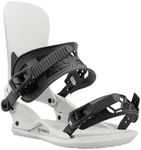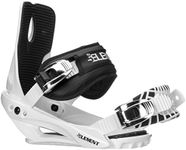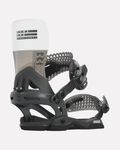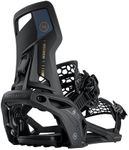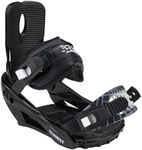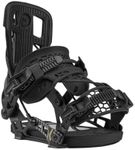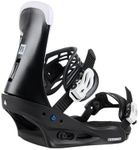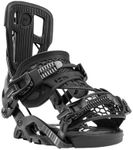Buying Guide for the Best Snowboard Bindings
Choosing the right snowboard bindings is crucial for your overall snowboarding experience. Bindings are the connection between you and your snowboard, and they play a significant role in how you control your board. The right bindings can enhance your performance, comfort, and safety on the slopes. When selecting snowboard bindings, consider the following key specifications to ensure you get the best fit for your needs.FlexFlex refers to how stiff or soft the bindings are. This is important because it affects how responsive your board will be. Bindings with a soft flex are more forgiving and comfortable, making them ideal for beginners or freestyle riders who need more maneuverability. Medium flex bindings offer a balance of responsiveness and comfort, suitable for all-mountain riders. Stiff flex bindings provide maximum responsiveness and control, which is preferred by advanced riders and those who enjoy high-speed carving. Choose the flex based on your skill level and riding style.
CompatibilityCompatibility refers to how well the bindings fit with your snowboard. This is crucial because not all bindings fit all boards. There are different mounting systems like 2x4, 4x4, and Channel. Make sure the bindings you choose are compatible with your snowboard's mounting system. Check your board's specifications and match them with the bindings to ensure a secure fit. This will ensure that your bindings are properly attached and provide the best performance.
Strap SystemThe strap system is how the bindings secure your boots to the board. This is important for comfort and control. Traditional two-strap systems have an ankle strap and a toe strap, offering a secure fit and good adjustability. Rear-entry systems allow for quicker and easier entry and exit, which can be convenient but may offer less adjustability. Hybrid systems combine elements of both for a balance of convenience and fit. Choose a strap system that matches your preference for ease of use and adjustability.
HighbackThe highback is the vertical plate that rises from the heel cup of the binding. It provides support and control, especially when making heel-side turns. Highbacks come in different shapes and flex levels. A taller, stiffer highback offers more support and responsiveness, ideal for aggressive riders. A shorter, softer highback provides more flexibility and comfort, suitable for freestyle riders. Consider your riding style and preference for support when choosing the highback.
BaseplateThe baseplate is the part of the binding that connects directly to the snowboard. It affects the overall feel and responsiveness of the bindings. Baseplates can be made from various materials, including plastic, aluminum, and composite. Plastic baseplates are more forgiving and comfortable, making them good for beginners. Aluminum baseplates are more rigid and responsive, preferred by advanced riders. Composite baseplates offer a balance of both. Choose a baseplate material that matches your skill level and riding style.
CushioningCushioning refers to the padding in the bindings that absorbs shocks and impacts. This is important for comfort and reducing fatigue. Bindings with more cushioning provide better shock absorption, which is beneficial for freestyle riders who land jumps and tricks. Less cushioning offers more direct board feel and responsiveness, preferred by riders who prioritize control. Consider how much cushioning you need based on your riding style and comfort preference.






